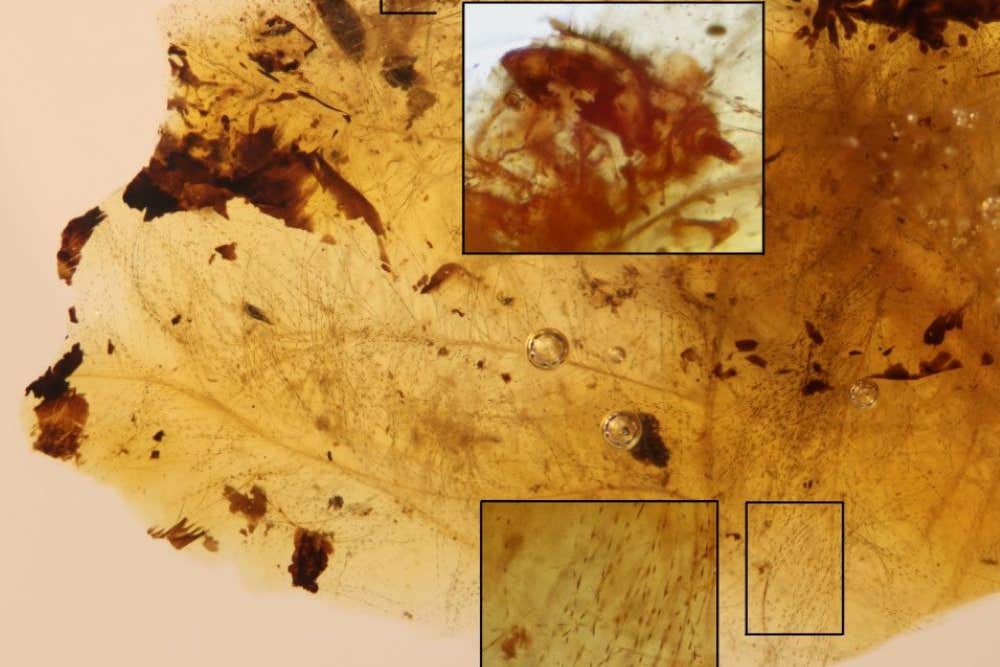Fossils reveal relationship between feathered dinosaurs and beetles
New fossils in amber have revealed that beetles fed on the feathers of dinosaurs about 105 million years ago

Your support helps us to tell the story
From reproductive rights to climate change to Big Tech, The Independent is on the ground when the story is developing. Whether it's investigating the financials of Elon Musk's pro-Trump PAC or producing our latest documentary, 'The A Word', which shines a light on the American women fighting for reproductive rights, we know how important it is to parse out the facts from the messaging.
At such a critical moment in US history, we need reporters on the ground. Your donation allows us to keep sending journalists to speak to both sides of the story.
The Independent is trusted by Americans across the entire political spectrum. And unlike many other quality news outlets, we choose not to lock Americans out of our reporting and analysis with paywalls. We believe quality journalism should be available to everyone, paid for by those who can afford it.
Your support makes all the difference.Beetles may have fed on the feathers of dinosaurs about 105 million years ago, fossils in amber have revealed.
The main amber fragments studied contain the shed skin (larval moults) of small beetle larvae tightly surrounded by portions of downy feathers.
Researchers said the feathers belonged to an unknown theropod dinosaur, either avian (bird) or non-avian, as both types of theropods lived during the early Cretaceous period and shared often indistinguishable feather types.
However, the feathers did not belong to modern birds since that group appeared about 30 million years later in the fossil record.
Lead author, Dr Enrique Penalver, from the Geological and Mining Institute of Spain, part of the Spanish National Research Council, said: “In our samples, some of the feather portions and other remains – including minute fossil faeces, or coprolites – are in intimate contact with the moults attributed to dermestid beetles and show occasional damage and/or signs of decay.
“This is hard evidence that the fossil beetles almost certainly fed on the feathers and that these were detached from its host.
“The beetle larvae lived − feeding, defecating, moulting − in accumulated feathers on or close to a resin-producing tree, probably in a nest setting.
“A flow of resin serendipitously captured that association and preserved it for millions of years.”
The larval moults preserved in the amber, from the Spanish locality of San Just, in Teruel province, were identified as related to modern skin beetles, or dermestids.
They are known pests of stored products or dried museum collections, feeding on organic materials that are hard for other organisms to break down such as natural fibres.
This is hard evidence that the fossil beetles almost certainly fed on the feathers and that these were detached from its host
According to researchers, dermestids also play a key role in the recycling of organic matter in the natural environment, commonly inhabiting nests of birds and mammals, where feathers, hair, or skin accumulate.
Dr Ricardo Perez-de la Fuente, from Oxford University Museum of Natural History, and co-lead author of the study, said: “It is unclear whether the feathered theropod host also benefited from the beetle larvae feeding on its detached feathers in this plausible nest setting.
“However, the theropod was most likely unharmed by the activity of the larvae since our data show these did not feed on living plumage and lacked defensive structures which among modern dermestids can irritate the skin of nest hosts, even killing them.”
The findings are published in the Proceedings of the National Academy of Sciences journal.


